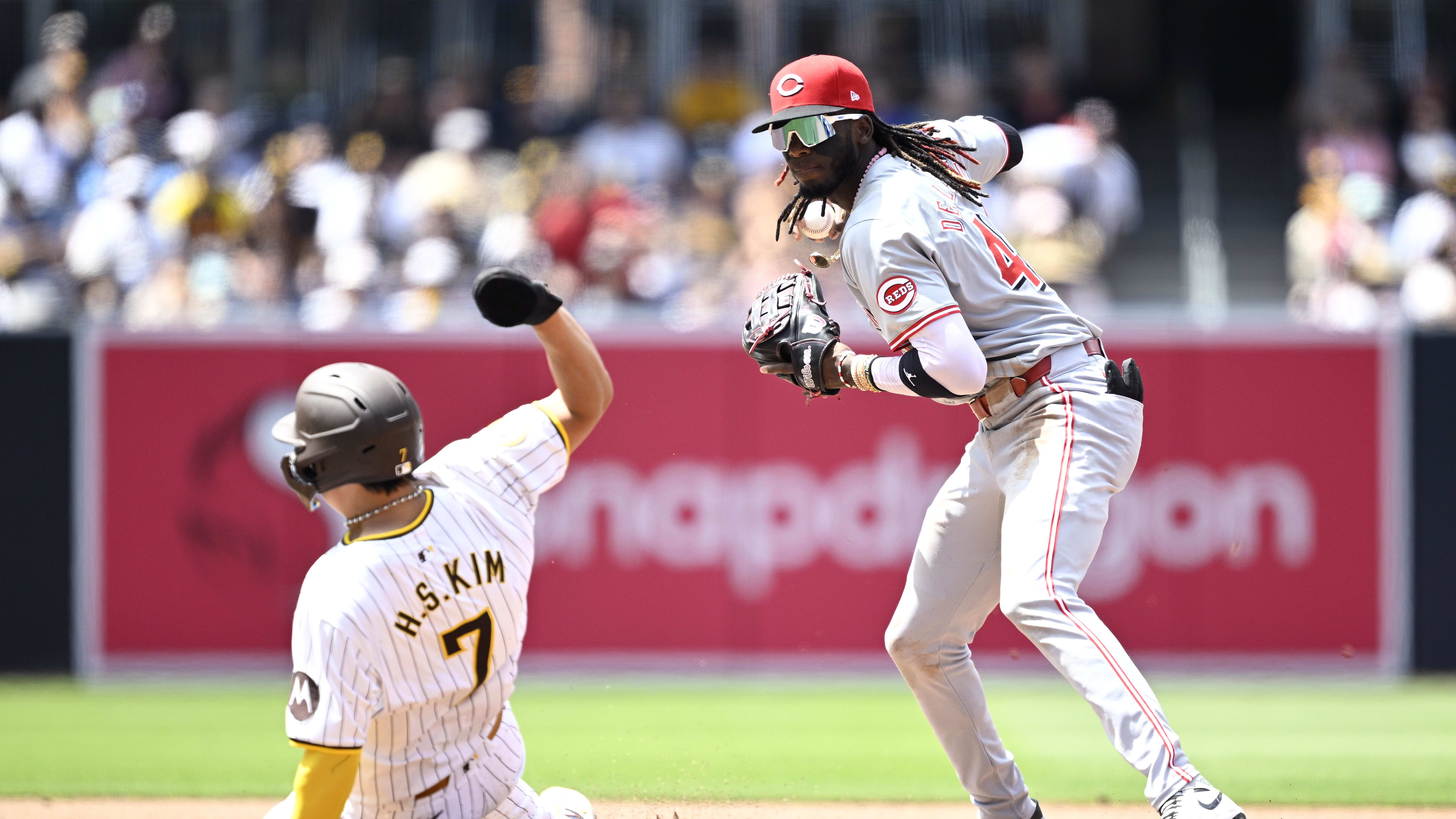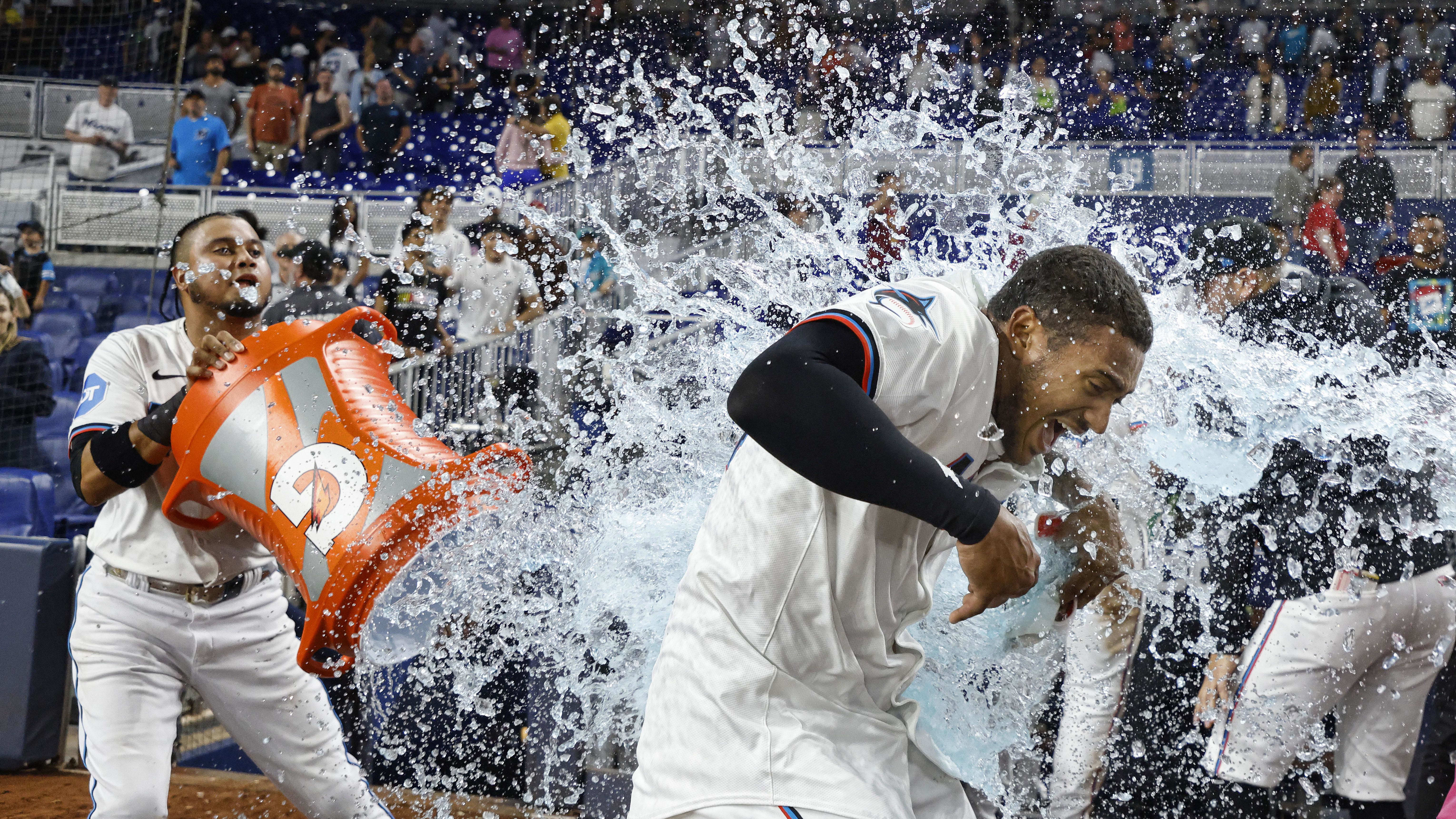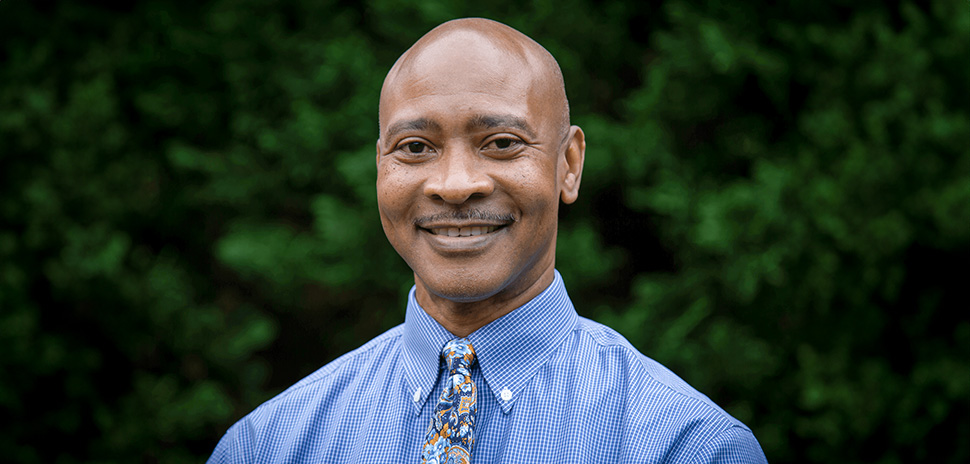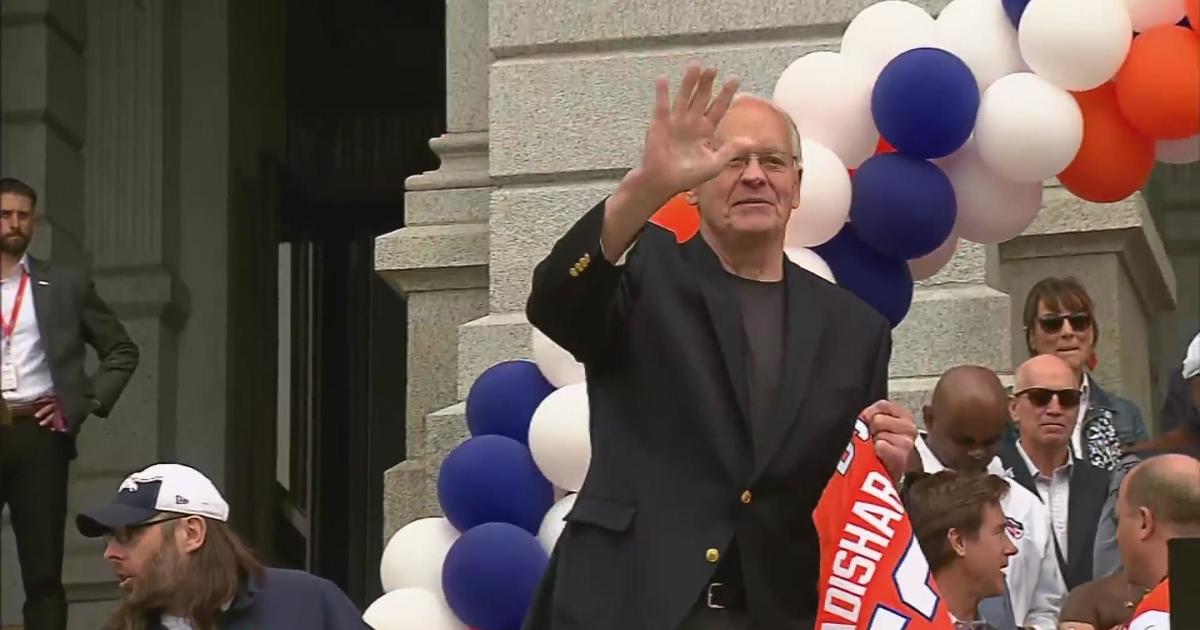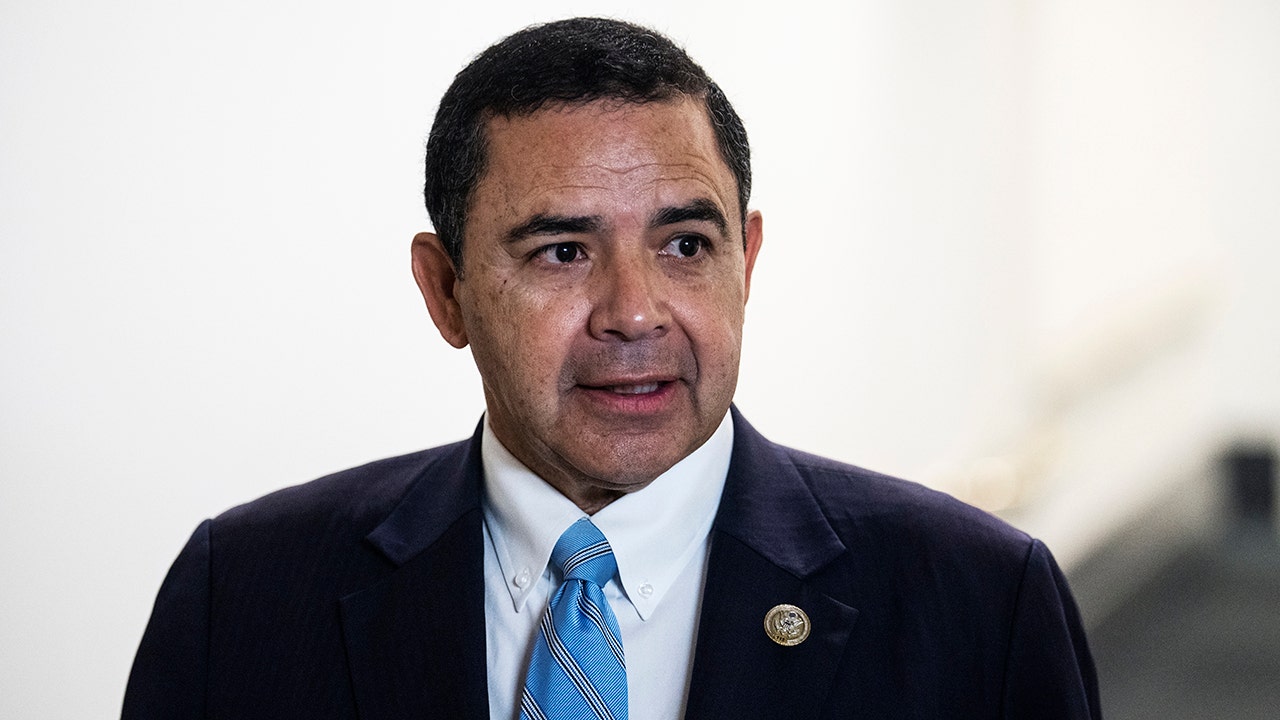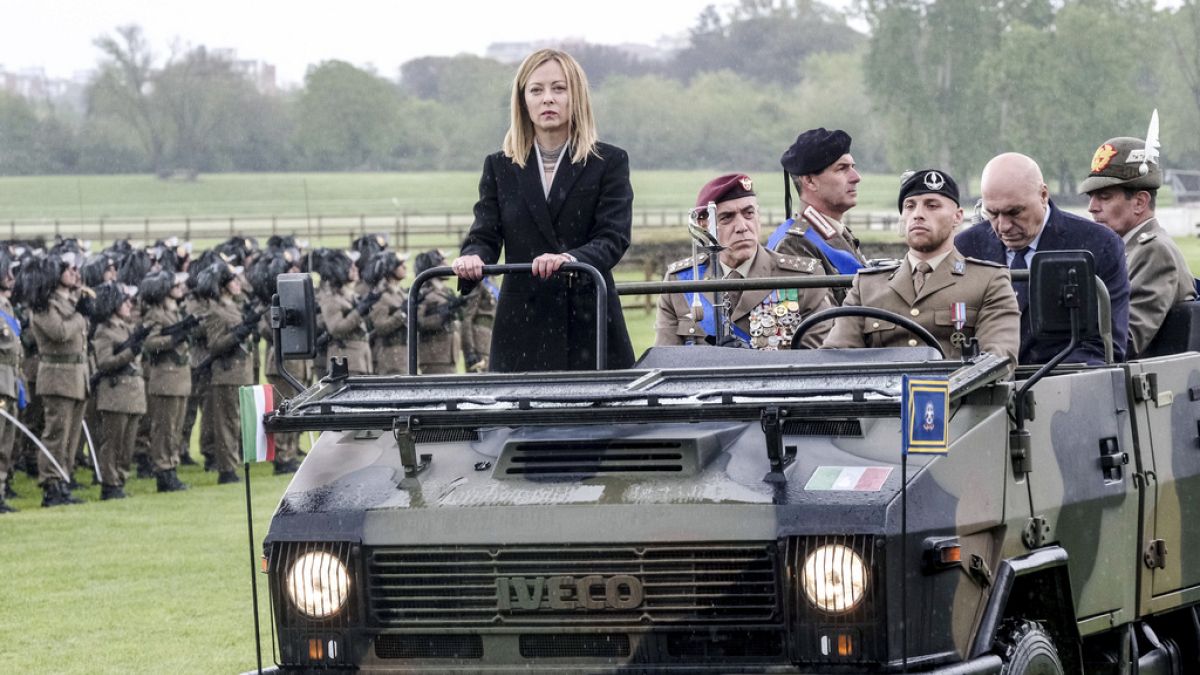Sports
'Like a death in the family:' The Oakland A's and their slow-motion tragedy of a year

Rooted in Oakland.
That was the slogan, the motto that was supposed to define the ethos of the Oakland Athletics under the leadership of John Fisher and Dave Kaval. They hung signs from the stadium facade and plastered the hashtag on social media. The A’s were about history and community. Their decrepit stadium and its concrete masses could be an eyesore, but the old place had its charm. Oakland’s small attendance numbers could be trumped by the right-field drums and the die-hard loyalties of the people who showed up every single night.
People like Bryan Johansen, whose fandom took on a life of its own when team social media accounts posted his candid reaction — “what the f—?” — after outfielder Ramon Laureano was hit by a pitch for the 11th time in 2019. Johansen is an Oakland lifer with the team’s script logo tattooed on his forearm. His Laureano post spawned memes, which morphed into a cottage industry featuring shirts, mugs, hats, banners, all saluting the audacious nature of Oakland fandom. While team executives explored options for a glitzy new ballpark complete with gondolas transporting fans from BART Stations to the ballpark, a New York Times article celebrated the Oakland Coliseum’s debaucherous depravity. The article called the Coliseum baseball’s last dive bar, and Johansen thought, “Man, that’s the most beautiful line I’ve ever heard talking about this stadium.”
Under the new moniker “The Last Dive Bar,” a fan effort led by Johansen and cofounders Paul Bailey and Carl Moren grew. Managing products and events turned into a sort of second job for Johansen, who works for Tesla in process engineering by day. Last Dive Bar formed a partnership with the A’s. Players wore their shirts; they had an official deal with Starling Marte. It was the kind of grassroots fan-led effort most franchises dream of cultivating.
Which made it all the more tragic when its founders evolved into unwitting ringleaders of an anti-ownership movement. Last season, the group partnered with another fan group, the Oakland 68s, to help organize a reverse boycott, in which supporters donned green shirts with the word SELL plastered on the front and coordinated chants echoed throughout the stadium from start to finish. In a season with an average attendance of 10,276, the game drew 27,759 fans. It was a rebellious moment that focused the attention of the sports world on Oakland, and it was a success. But it was also a last resort, a desperate measure by a group that felt it had little choice left.
“I don’t want people to just focus on the boycott,” Johansen said, “because that’s not what we are. We’re forced to be that because of this ownership group.”
It’s always a painful thing, a civic institution severing ties to a city. The Colts first left Baltimore under the cover of night, there one day and gone the next. The people of Seattle felt the SuperSonics were swindled from under their feet. The A’s are leaving Oakland under a different set of circumstances: a long, slow, tragic burn.
One year ago, in April of 2023, the franchise announced an agreement to purchase land for a new ballpark on the Las Vegas Strip, one of baseball’s proudest franchises seduced by the temptations of Sin City. The announcement featured few certain details about the stadium and its financing plan. It also did not specify where the A’s would play in the interim. Hope remained the A’s might stay in Oakland, at least for a few more years.
Now — after a year of total uncertainty, many unanswered questions and more public relations gaffes — the A’s are scheduled to play in Sacramento for at least 2025-27. They will take over a Triple-A ballpark that currently accommodates 14,014 fans and has clubhouses located near the outfield, spending a mininum of three seasons in a limbo so total that they will not even take on the name of the city they’re using as a stopover. No longer the Oakland Athletics, not yet the Vegas Athletics, and unwilling to become the Sacramento Athletics, they will simply be the Athletics — generic, nomadic, unremarkable.
Rootless.
“It’s like a death in the family, and your own family member murdered the person,” Johansen said. “It’s horrible. There’s no words to describe it. There’s teams that have relocated before and it hurts and it’s painful. … But this is the most long, drawn out relocation process in probably the history of sports. And the ugliest, too.”
The morning after A’s players learned they will spend the next three seasons in Sacramento, the mood in the team’s young, largely anonymous clubhouse was business as usual. In some ways, they’re used to the turmoil; it’s the only major league life many of them have ever known.
On the field, this year’s young A’s feature few recognizable faces. The team’s $61 million payroll, per Spotrac, ranks last in the league. Its farm system ranks 30th out of 30. Among the most famous draft picks in an era of struggles is Arizona Cardinals quarterback Kyler Murray, whom the organization drafted No. 9 overall but was unable to lure away from the NFL.
Anonymous as this current group is, these are the players who will go down as the faces of the A’s final year in Oakland.
“We’re kind of caught in the middle,” outfielder Brent Rooker said, “and it’s a tough place to be at times.”
Multiple members of the team said their concerns over the franchise’s future centered mostly on where they and their families may be living next year. It’s a strange situation, one where most of the players have been here only a couple of years. The fans feel the pain of a much longer timeline.
“I think the loyalty from the fan base is what stands out,” Rooker said of playing for the A’s. “The people who show up to the games you get to know on a personal level because they’re there every day. They show up day in, day out. You get to talk to them, you hang out with them at times when you’re playing and develop relationships with them.”
In Oakland, only one player has been on the roster more than six years. That is starting pitcher Paul Blackburn, who grew up in the East Bay and attended games at the Coliseum as a boy. More than any other player, he understands the wrinkled emotions that have led fans to hoist SELL THE TEAM banners, to stage elaborate reverse boycotts, to lead chants and sell wristbands and engage in a most quixotic effort to have their opinions matter.
“It’s a very interesting situation,” Blackburn said. “Especially being from there and just having a lot of memories going to games there as a kid … Honestly I kind of just feel bad for the community, the fans in general.”
Paul Blackburn is the longest-tenured player on the A’s roster. (Jason Miller / Getty Images)
The emotions were more palpable across the hall, where one of the players in the Detroit Tigers’ clubhouse was outfielder Mark Canha, a San Jose native who rooted for the San Francisco Giants growing up. Canha matured into a Rule 5 pick and a member of the A’s from 2015-21. He posted an emotional farewell after leaving the organization in 2021. He spoke of returning to Oakland as a member of the New York Mets and still getting greeted by the smiling faces of team employees.
“It’s hard not to be nostalgic about the stadium you made your debut in that’s 40 miles from the house you grew up in,” Canha said. “I’ll never shame the Coliseum for what it is. It’s a beautiful place for me. Other people might say some things about it, but I love it.”
Detroit manager A.J. Hinch was drafted by the A’s and played for the organization from 1997-2000. He spoke for many in the sport when a reporter asked for his take on the A’s going to Sacramento.
“The decisions and all that stuff to leave is way above my pay grade, but I know what the fans bring to Oakland, I know wearing the green and gold matters to that group that’s there,” Hinch said. “And it’s just kind of sad. … There will be a hole in the league because Oakland doesn’t have a team.”
As A’s players focus on staying in the major leagues, proving themselves, trying to play well and tread water, they do so against a low, steady hum of controversy. Earlier in April, social media was set ablaze when Johansen reacted to news the A’s had demoted outfielder Esteury Ruiz, a negative-WAR player who nonetheless stole 67 bases in 2023. Ruiz was among players who was known to wear one of the yellow rubber “I Stand With Oakland” bracelets produced by Last Dive Bar. That same day, Rooker was not in the starting lineup. Johansen posted from the Last Dive Bar X account, showing photos of Ruiz and Rooker wearing the bracelets. “Rooker benched, Ruiz sent down,” the post read. “One has to wonder why …”
Rooker benched, Ruiz sent down.
One has to wonder why… pic.twitter.com/tscp9KnFnQ
— Last Dive Bar 🏟 (@LastDiveBar) April 1, 2024
Soon the Last Dive Bar account, on April Fool’s Day nonetheless, was feeding into the melodrama, posting photoshopped “evidence” of the wristbands on John F. Kennedy, Bigfoot, Jimmy Hoffa and Jesus Christ. The whole thing was ludicrous. But because this is Oakland, Rooker was soon having to dispel rumors of a WristbandGate conspiracy to the media.
“In any other organization, it wouldn’t have grown legs,” Johansen said. “It would have just been like something silly, no way that’s even possible. But in this instance, it’s feasible. And that just speaks volumes to how this front office is run, this organization and how people view this organization.”
They envisioned the site from the sky. It was 2016 when Fisher and his associates climbed high atop a crane to overlook the site at Howard Terminal on the Oakland Estuary, the area in the Port of Oakland where they devised an ambitious plan to bring $11 billion worth of development and a $1.2 billion ballpark. The glittering Bay Area views symbolized lofty promise. But not all the settlers who first came to the Bay struck gold.
As the Howard Terminal plan unfolded, officials from the City of Oakland were eager to keep the A’s in The Town. The Warriors were already leaving for San Francisco, the Raiders already headed to Vegas. Here Fisher and the city were negotiating on what could have been a mutually beneficial plan, even if it always had obvious pitfalls. The Howard Terminal site, for instance, lacked built-in public transit infrastructure — hence unusual ideas like the plan’s proposed gondolas. Fisher spent more than $100 million on permits and other clearances for the site, and the City of Oakland narrowed the gap in funding for the $12 billion project to less than $100 million. But as deliberations grew more serious, with the COVID-19 pandemic hitting in the midst of planning, progress slowed. The A’s pointed to opposition from the Oakland City Council and local interest groups as a detriment. By May of 2021, MLB directed the A’s to explore the idea of a ballpark in Las Vegas. Kaval soon said the A’s were on a “parallel path” regarding possible ballparks in either Oakland or Las Vegas.
“John Fisher has proven one thing: He’s never been able to put a shovel in the ground anywhere,” Johansen said. “There’s always been doubt in John Fisher himself to get anything done, but the Howard Terminal plan was just completely over the top, just outlandish.”
Meanwhile, the Oakland-Alameda County Coliseum fell into disrepair. Possums in the broadcast booth, mice in the vending machines, sewage in the visiting dugout. As the organization set its sights on other horizons, the franchise that first sparked baseball’s analytics revolution fielded gutted rosters, including a 2023 team that lost 112 games. As attendance dwindled and the team plunged to the bottom of the league standings, the organization made its intentions crystal clear. Before the 2022 season, the prices of season tickets doubled.
By the spring of 2023, it was apparent Fisher had set his sights elsewhere. Disputes between the team and city over off-site infrastructure and environmental impact complicated the Howard Terminal process, and the plan broke down, just like a previous proposal of a stadium near Lake Merritt did a few years earlier.
“I’ll be very honest. I was obviously upset. This felt really unfair,” Oakland mayor Sheng Thao told The Athletic’s Ken Rosenthal last year. “But there are no shovels in the ground (in Las Vegas). And until there is a shovel in the ground and it’s starting to be built, it’s still reality that the Oakland A’s can still be in Oakland.”

The planned site of the new A’s stadium in Las Vegas. (Ethan Miller / Getty Images)
Even the deal intended to take the A’s to Vegas came with controversy. MLB commissioner Rob Manfred agreed to waive a relocation fee estimated at $300 million, reportedly because the plan would not have been financially feasible for Fisher otherwise. Leading up to 2024, the A’s were operating under a Jan. 15 deadline imposed by MLB to reach a binding agreement for a new stadium — necessary for the team to remain a recipient of the league’s revenue sharing.
And still the question loomed: If a new ballpark would not be ready until at least 2028, where exactly would the A’s play until then? The Coliseum lurked as one option, a phantom vessel still equipped to house the team. The city and the A’s had meetings as late as April 2 of this year regarding extending the team’s lease at the Coliseum, but negotiations between Fisher and the city long ago grew contentious. The fans who followed the saga and partook in some of the conversations grew weary. “It feels like the fight isn’t over,” said Jorge Leon, founder of the Oakland 68s fan group. “But at the same time, it’s like, ‘Leave already if you want to leave. We’re done with you. We want to move on.’”
In November, Leon was among a group of fans who traveled to MLB’s owners meetings in Texas. The group had a brief conversation with Fisher, in which the owner reportedly told them, “It’s been a lot worse for me than you.”
By April 5, the A’s announced their agreement to spend the next three seasons playing in Sacramento’s Sutter Health Park. The players who had been wondering what their futures held found out like the rest of the public.
“In baseball, you find out stuff on Twitter,” pitcher JP Sears said. “That’s just how it is.”
Concerns about the viability of a major-league team playing in a Triple-A park soon came flooding in from across the league. Fisher’s quotes from a press conference in Sacramento did not help the public perception. He named no Oakland players but touted the idea of watching “Athletics players or Aaron Judge” hit home runs in “the most intimate ballpark in all of Major League Baseball.”

Sutter Health Park will be the home of the A’s for the next few years. (Rich Pedroncelli / Associated Press)
The A’s will make this “intimate” park their home for the next three seasons, and they will be known simply as the Athletics, with no city attached. Last Dive Bar, too, stirred up more controversy when it filed to trademark the name “Las Vegas Athletics.” This was the latest symbol of vitriol between fan group and team. The relationship between Last Dive Bar and the A’s first soured over a back-and-forth regarding potential trademark violations. Johansen says his group complied with everything the A’s and MLB asked.
In a statement provided to The Athletic, the A’s organization said in part: “MLB’s engagement with the Last Dive Bar regarding trademark infringement was consistent with other enforcement activities taken by MLB. Any suggestion that the A’s attempted to shut down or exclude the Last Dive Bar is unfounded.”
Now fans of the team are witnessing the last year of Major League Baseball in Oakland. And beyond these coming seasons in Sacramento? Nothing is quite across the finish line. The first set of renderings for the Las Vegas stadium were more dream than reality. The 9-acre stadium site was likely too small to accommodate the proposed retractable-roof stadium. The latest set of renderings describe a 33,000-seat ballpark with a fixed roof on the site of the former Tropicana Resort and Casino. Construction is scheduled to begin in April 2025. Although Vegas has obvious appeal as the home for an MLB franchise, some of the underlying factors are puzzling. Oakland’s television market ranks 10th in the country. Las Vegas ranks 40th.
“Low attendance is just the product of the ownership and what the ownership has done,” Johansen said. “Nowhere else in business, if a CEO of a company says, ‘The reason my stuff isn’t selling is because of the consumer,’ it’s like, ‘No, it’s you.’”
Meanwhile, the political action group Schools over Stadiums is gathering signatures and going to court in effort to put the $380 million in public funding on a ballot referendum, which would allow Nevada taxpayers to vote on whether they want to allocate public funds to a new stadium.

A rendering of the A’s planned Las Vegas stadium. (Rendering by Negativ)
Last Dive Bar recently donated $10,000 to Schools over Stadiums and said an independent donor planned to match that amount. In the event a call for public funding were to be rejected — like what recently happened with a stadium measure in Kansas City — the calculus for Fisher’s contributions to a new stadium would be altered significantly. One recent Emerson College poll estimated 52 percent of local voters opposed using public money to finance the stadium.
“As much as Vegas deserves and wants an MLB team, they’re not gonna sit here and just be used by a billionaire to get it,” Johansen said. “It will go to vote and it won’t pass, and then Vegas is off the table, at least for John Fisher. The question is then, where do they play? Where do they play? Oakland?”
Since coming to Oakland from Kansas City in 1968, the A’s cultivated a rich history. Reggie Jackson and Catfish Hunter, Dave Stewart and Vida Blue. There were the white cleats and the curly mustaches. Rickey Henderson, Mark McGwire and José Canseco. Moneyball and 20 straight wins, Barry Zito and Miguel Tejada.
That was then, and this is now. The final season of the A’s in Oakland will feature a roster projected to finish with the fewest wins in MLB, playing in a rotting stadium, in front of the few fans who still have the heart to come to games.
“Nothing lasts, you know?” Canha said. “It’s unfortunate, but we have the memories.”
For those who have lived all these years and all the different chapters, it is still difficult to imagine exactly what it will be like when the A’s leave Oakland. Eventually some of the unsolved questions will get their answers. The franchise will move on from this prolonged mess, and the people of Oakland will be left picking up the pieces.
People like Bryan Johansen, who says he is no longer a baseball fan. After the A’s leave Oakland, he says he will never be a fan of the game again.
“No, man,” he said. “No. No. Because what they’ve shown with this move is that they do not care about the fans. All that stuff you see on TV about how they try to promote the game, it’s built on a house of lies. If it were the case that MLB had the best interests of the fans and had the fans first in mind, they wouldn’t be doing everything they’re doing with the Oakland A’s.”
— Additional reporting by The Athletic’s Zack Meisel.
(Top photo of fans during the reverse boycott: Brandon Vallance / Getty Images)

Sports
Premier League salary cap mailbag: Why? Who wins and loses? How would it work?

Premier League clubs this week opted to push on with plans for a hard spending limit — a de facto salary cap tied to the income of the lowest earning side in the top flight.
OK, we hear you say, but what on earth does it all really mean?
Who better to answer your questions than Matt Slater, who broke the original story? If you prefer, you can listen to Matt for free on Apple Podcasts, Spotify and the usual listening places on The Athletic FC Podcast.
Let’s dive in…
What are the real motivations for such a rule? — Adam M
Do I detect a note of suspicion, Adam?
For some, such as Crystal Palace chairman Steve Parish, who has been talking about this idea longer than most, there are sincere concerns about the competitive balance of the league.
They worry that the revenues of the ‘Big Six’ — which already feels like a ‘Big Seven’ and might be a ‘Big Eight’ before long — are growing faster than the revenues of the Premier League’s middle and lower classes, and that is before you factor in the increased sums they will receive from playing more Champions League games and occasional appearances in the FIFA’s revamped Club World Cup. Financial fair play regimes that tie your ability to spend to your own revenues play into the big clubs’ advantage, which compounds with each passing year.
So, “anchoring” is an attempt to slow the big clubs down. It’s a backstop to the squad cost rule that UEFA has already introduced and the Premier League is moving towards. The two are meant to be complementary, with anchoring being the backstop — a hard cap that even the richest/most successful/most ambitious club cannot go beyond.
Follow the Champions League on The Athletic…
What is the role of the Professional Footballers’ Association (PFA)? — Peyton B
Is there any chance the PFA will agree to a hard spending limit of 5x? And, if yes, what concessions would they require from the owners? — Dave D
The PFA calls itself the players’ trade union and it is, officially, the world’s oldest players’ union. But it has spent most of its history acting more like a lobby group, with a large charitable arm and growing education and healthcare sections. Unlike the North American players’ unions, it has not engaged in big disputes about profit-sharing with the clubs, the players’ employers, and it has not signed formal collective bargaining agreements with them.
Instead, there is almost a gentleman’s agreement between the leagues, on behalf of the clubs, and the PFA that the former will fund the union’s work in looking after former professionals who need new hips, providing counselling for those who need it, funding grants for second careers and backing research into conditions such as dementia.
The PFA, unsurprisingly, hates the idea of salary caps. Would you like it if a third party said your employer was not allowed to pay you over a certain level, even if that employer wanted to and could afford it?
Erling Haaland with the 2022-23 PFA Player of the Year award (PFA)
This is why European football’s governing body UEFA and everyone else have always had to step carefully when introducing cost controls. To avoid breaking European Union and national laws on restraint of trade, governing bodies have neeed to prove that what they are doing is justified by a legitimate aim — the sustainability of a culturally significant industry — and the proposed measure is fair, proportionate and transparent. In other words, they cannot push it too far.
So, rules that tie a club’s ability to spend to its ability to earn have, until now, been OK with lawmakers, as there is a clear link to sustainability. But linking a club’s ability to spend to someone else’s earnings? Hmmm. Debatable.
And it is almost certainly a debate the PFA will enter. As things stand, it is aware of the Premier League’s anchoring proposal and some preliminary conversations have taken place, but it is adamant that a proper consultation on the matter, at the relevant body, has not started.
The body in question is the ‘Professional Football Negotiating and Consultative Committee’, which is comprised of members from the PFA, the English Football League, the English Football Association and the Premier League. It is where all matters relating to employment in the game are discussed. If its members cannot agree, the dispute goes to independent arbitration. And there has been a lot of that in football of late.
Which clubs will benefit the most and the least from this? The clubs that objected to this seem very different, so it’s hard to tell — Andrew R
Good question!
Crystal Palace chairman Parish clearly believes it will help his team continue to compete in the Premier League. Anything, even something as loose as the proposed 5x anchoring cap, will help Palace put out a competitive team every week in the Premier League.
And every other team in Palace’s tax bracket seems to agree. For them, letting Manchester City and the rest spend 70 per cent of their ever-growing total revenues on their squads will destroy what is left of the jeopardy when City meets a team from the league’s lower half.
But the other big potential beneficiaries of anchoring are those clubs directly competing with Manchester City right now, and worried about the rising threat of Newcastle United. They want to tie their rivals to a more transparent cost-control mechanism. So, this would explain the support from Arsenal, Liverpool and Tottenham Hotspur.
Manchester United would ordinarily be in that gang but their new increasingly de-facto owner INEOS is concerned about anchoring slowing down its ability to perform the radical surgery United’s squad requires. So, their opposition is more tactical than strategic.

Sir Jim Ratcliffe, part-owner of Manchester United (right), with Sir Dave Brailsford (Robin Jones/Getty Images)
Aston Villa’s opposition to the idea is interesting as it reveals just how ambitious their billionaire owners Wes Edens and Nassef Sawiris are for the club. In the past, Villa would have been in favour of something that constrains the league’s elite. Now, they see themselves as potential aristocrats.
And Chelsea, well, they abstained probably because they realised a vote against the idea was not going to stop it from proceeding to the next stage in the consultation and legal process, so there was no point voting against it. But, equally, they could hardly back a rule that they are probably the only club to be in immediate danger of breaching. So, they did neither and abstained.
Will the players not just go to a league without a cap? — Darragh N
All of them, Darragh? And where? Which league pays average salaries anywhere near as high as the Premier League?
I understand the concern, and it will be voiced as a reason not to do this by those who hate the idea. I just do not think it is very likely.
According to the most recent data from UEFA, 10 of the top 20 wage bills in European football are in the Premier League. No other league has more than three representatives.
The two biggest wage bills in Europe, and therefore global football, are at Barcelona and Paris Saint-Germain, but they can only field 11 players at a time, and both are trying to trim their wage bills, with Barca badly needing to stop their slide towards bankruptcy and PSG moving towards a more sustainable model.

GO DEEPER
Who is the best-paid player at every Premier League club?
Nothing lasts forever, of course, but there is no evidence of any short- or medium-term threat to the Premier League’s status as the richest domestic league in global football.
Could the Saudi Pro League be the threat? It might, one day, but I would argue there is just as much chance of the SPL going the same way as the Chinese Super League in a decade as there is of it becoming a genuine challenger to the Premier League, La Liga, Bundesliga and other major leagues.
If I were in charge of the Premier League, I would be more worried about Major League Soccer but, as we know, North American sports owners love cost controls, so I cannot imagine them getting into an arms race for players with the Premier League, particularly as half of those owners are likely to own Premier League teams, too.

GO DEEPER
It’s a controversial topic, but does taking a Premier League game to the U.S. make sense?
How punitive are these rules on the richer clubs? A circa £500m limit on spending is hardly forcing teams to scratch around the bargain bin — Tom N
I think you have answered your own question, Tom. And the answer is… not very! Not yet, anyway.
We have estimated each club’s squad cost calculation for the 2022-23 season. The numbers that go into that calculation are the wages for your first-team squad players and coaching staff, your annual amortisation bill (the cost of your transfers spread across the length of their contracts) and any agents’ payments you make.

Now, some of those numbers are publicly available but we have had to make educated guesses on the biggest one, the wage bill, as clubs only publish their total wage bills — for all their staff — and not what they pay their players. However, most clubs spend about 70 per cent of their total wage bill on their players, so that is the amount that we have used.
The result is that only Chelsea spent more than five times what the Premier League’s bottom club, Southampton, received from the league in central payments. The Saints’ share of the league’s broadcast and sponsorship cash was £103.6million, which would have set a 5x cap at £518million. Chelsea’s estimated squad cost that season was £539million.
So, no, you’re right, if the only club to possibly breach the proposed anchor was Chelsea, after their wild shopping spree, this would not appear to be particularly restrictive.
Curious how it will work, timing-wise. Will they confirm the amounts available to spend the next season, once the season is over? — Courtney A
You are not the only one to be curious about the details of this, Courtney, and you ask a good question.
Whether the Premier League bases the cap on the multiple of the previous season’s bottom club’s central income or an estimate of the new season’s bottom club’s number is not clear yet. But I do not see how they can set the cap retrospectively. Clubs must know where they stand, so the cap will have to be set in advance.
I wonder if the cap should be linked to rolling three-year domestic TV rights deals.
The actual calculation is not that difficult, as most of the numbers are easy to predict. Every club receives a basic award of about £90million, with each place in the table worth a £3.1million merit payment, so the bottom club gets 1 x £3.1million and the top club 20 x £3.1m.

The only real variable is the facility fee, as that is the payment clubs receive each time they appear on live television in the UK, and it is not often the case that the team that finishes 20th is the least-picked team.
The facility fee is just over £1million a game and every team is guaranteed a minimum number of televised games. The range for facility fees in 2022-23 was £25.3million (Manchester City) to Bournemouth (£10.2m).
So, there is some variability in the exact amount your bottom club will earn but not much. The facility fees make up 25 per cent of amount clubs make from the domestic deal, which is about half of the total income. As previously mentioned, Southampton received £103.6million last season and that seems like a good benchmark for a bottom-placed team in the current broadcast rights cycle.
How will this new rule tie in with UEFA’s rules? Could you have a situation where a team spends more than £500million and wins the Premier League fairly but is not allowed to play in Europe? — Ben H
This proposal will work in tandem with UEFA’s squad cost rules and the Premier League’s version of the same concept. Think of anchoring as a backstop or a relatively distant line in the sand that nobody can cross.
Your second question is an intriguing hypothetical but does not seem very likely to me.
Even if we ignore the numbers and just pretend that there is a way for a club to emerge from the pack and win the league, while breaching UEFA’s 70 per cent threshold, do not forget that winning the league will bring a big TV merit payment, increased commercial income and the promise of at least £45million of Champions League prize money.
So, they might bust the 70 per cent limit in the year they win the Premier League, but they are unlikely to do so the following season. We have a very recent example of such a club: Leicester City. They made a record profit the year after they won the Premier League.
Finally, even if your champion still, somehow, manages to breach UEFA’s threshold, the European governing body does not like banning champions from its competitions. It has a long track record of dishing out fines, which they collect by withholding some of the prize money, and squad restrictions.
This approach is actually baked into the new squad cost rules, as UEFA has published a penalty schedule that links the size of the fine to the scale of the breach.
(Top photo: Michael Regan/Getty Images)
Sports
Fever’s Caitlin Clark says flying commercial will be ‘an adjustment’ as debate on WNBA flights is reignited
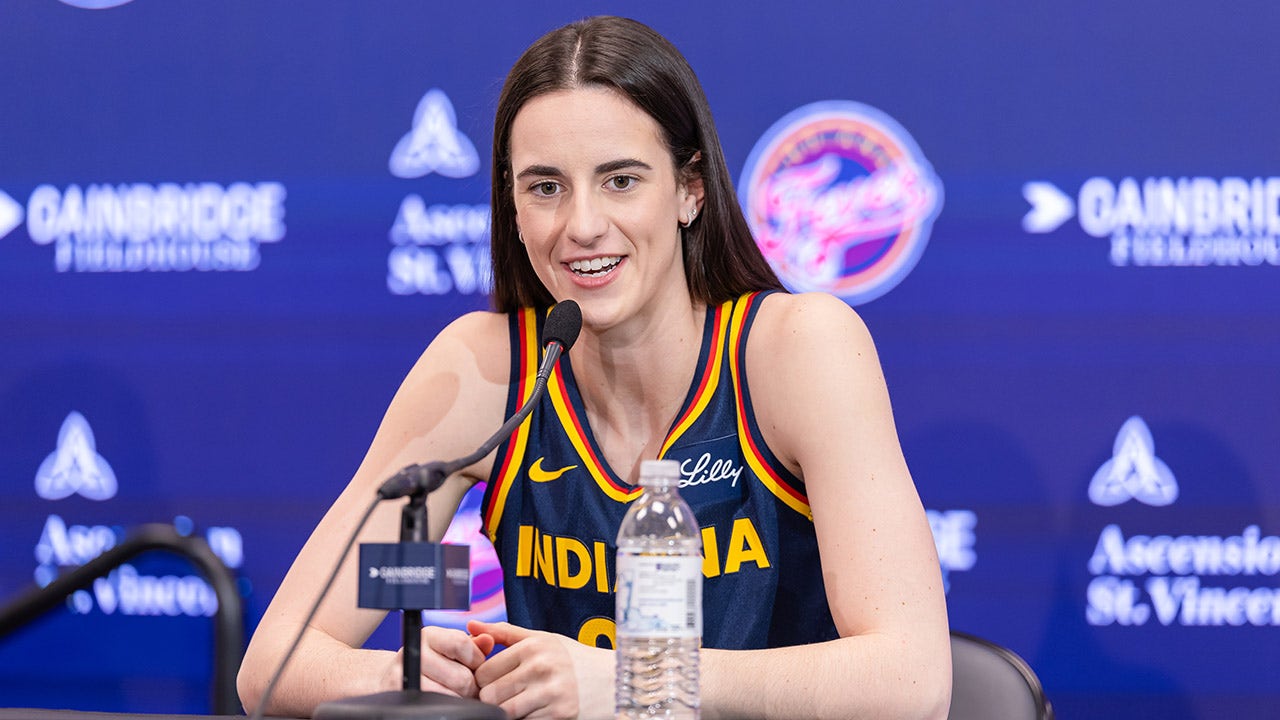
The debate surrounding the WNBA’s use of commercial flights has come back into the spotlight after former women’s college basketball star Caitlin Clark made her first trip with the Indiana Fever to Texas this week ahead of their preseason game against the Dallas Wings.
Video shared on social media Thursday showed the WNBA No. 1 overall pick and her teammates arriving at Dallas Fort Worth International Airport.
Indiana Fever guard Caitlin Clark speaks with the media after the WNBA basketball team practiced in Indianapolis, Sunday, April 28, 2024. (AP Photo/Michael Conroy)
The immediate response from social media users was why the league wasn’t flying the team on a charter flight – something the Iowa program utilized during Clark’s time as a Hawkeye.
“It’ll definitely be an adjustment, but it is what it is,” Clark said of the issue while speaking to the media on Thursday.
“At this point of my career and across the WNBA, it is what it is. I’m sure, certainly, everybody would say that they would love to be flying charter all the time – that definitely would help a lot of problems. But I think the fever organization has done a really good job of getting out ahead of things. There’s going to be a lot of security traveling with us, there will be certain plans of how we’re going to navigate going throughout airports and things like that.”
Becoming the NCAA Division 1 all-time leading scorer, Clark helped the NCAA reach its best viewership in history for women’s basketball, with nearly 19 million fans watching the title game.

Caitlin Clark at the WNBA Draft held at the Brooklyn Academy of Music on April 15, 2024, in New York. (Cora Veltman/Sportico via Getty Images)
CAITLIN CLARK KNOWS WNBA TITLE IS ULTIMATE GOAL, BUT HOPES ‘TO GET BACK TO THE PLAYOFFS’ IN ROOKIE YEAR
The hope is that it will translate to the WNBA, and if it does, it could present a safety issue at airports.
“It’s not like we’re the odd man out here. Everybody has to navigate, it and I think it’s going to cause some problems, maybe, because the popularity of our league is continuing to grow and having to navigate travel with that,” Clark continued Thursday.
“But at the same time, that’s a positive thing, too. You want people to be excited about our game. Hopefully, it changes in the near future, but for now that’s just what it is, and everybody’s dealing with the same thing. You can’t use it as an excuse.”
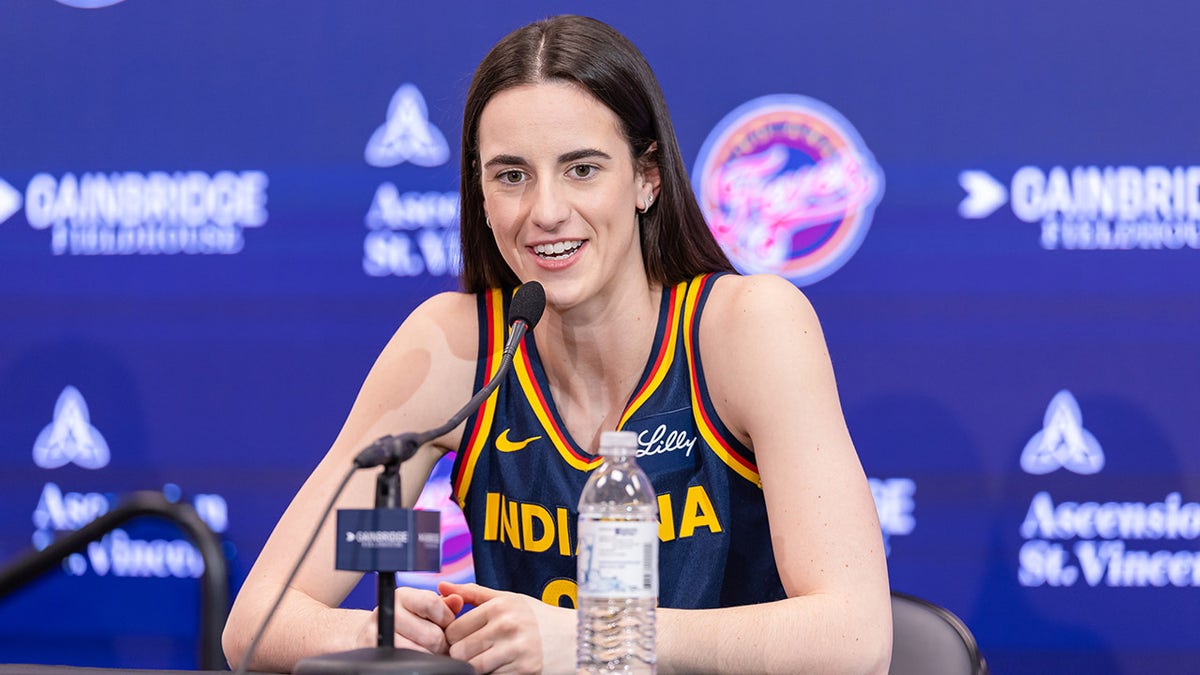
Caitlin Clark, #22 of the Indiana Fever, talks to reporters during media day activities at Gainbridge Fieldhouse on May 1, 2024, in Indianapolis, Indiana. (Michael Hickey/Getty Images)
Fever general manager Lin Dunn told reporters Thursday that the team has security measures in place, but declined to disclose the details.
“We’re certainly aware of what took place at Iowa when she traveled to away arenas, and certainly we’re aware of what happened at Ohio State, and we’re going to take all the precautions we can to make sure that not only is she safe, but that I’m safe – that we’re all safe, that all the players are prepared to be safe and secure.”
Last year, the WNBA spent $4 million on charter flights for the entire playoffs as well as for any back-to-back games during the regular season. Ahead of the draft last month, Commissioner Cathy Engelbert confirmed that the league would do the same this season.
“No one wants (charters) more than I do for these players. We need to be in the right financial position,” Engelbert said. “Just a few years ago, we were surviving. Now we’re going from survive to thrive. We want to do it at the appropriate time.”
The Associated Press contributed to this report.
Follow Fox News Digital’s sports coverage on X, and subscribe to the Fox News Sports Huddle newsletter.
Sports
Trainer Phil D'Amato realizes his Kentucky Derby dream thanks to Stronghold

It’s really quite simple. If you’re in horse racing, regardless of your job or position, you want to get to the Kentucky Derby. But the reality is very few make it.
Phil D’Amato has won multiple training titles at Santa Anita and Del Mar. He’s had 32 starts in the Breeders’ Cup. He’s missing only one thing from his rather impressive resume and that box will be checked Saturday when the gates open in the 12th race at Churchill Downs.
“This is pretty much what I’ve worked my whole career to get to this point,” D’Amato said. “It’s been my dream to have a horse in the Kentucky Derby. And to finally achieve that, I’m still taking it one day at a time. I can’t really put it into feelings. And to be able to share it with my friends, family and owners, it’s just a good feeling.”
When he talks about his “whole career” you are talking years, not decades. The 48-year-old Los Angeles native has only been a head trainer since 2014 when he took over the barn of the late Mike Mitchell. That’s not that long of a wait, unless, of course, you are the one waiting.
The horse that made the Derby dream possible is Stronghold, who won the Sunland Derby and Santa Anita Derby. With trainer Bob Baffert still ineligible to race at Churchill Downs, the weight of California racing was on D’Amato’s shoulders before the Santa Anita Derby. He needed to finish at least third or the state might be without a Kentucky Derby starter for the first time in at least 70 years. (It’s probably longer but records are difficult to verify.)
Obviously, Stronghold did better than third running down Imagination in the stretch to win by a neck. The colt isn’t getting the respect the Santa Anita Derby winner normally gets and is listed at 20-1 on the morning line. Early betting shows him going off at twice that price.
D’Amato is no stranger to Churchill Downs having run a string of horses there and he’s also had horses on the Derby Day undercard on multiple occasions. But his history with the track goes back even farther.
“I started really working pretty much at Churchill Down when I first started in this game, finishing off the day looking at the Twin Spires, thinking about one day, hopefully, getting to the Derby and training a horse,” D’Amato said. “To finally realize all of that … I’m not going to take anything for granted.”
D’Amato was a political science major at USC and then went to Arizona’s renowned Race Track Industry Program. He took all that education and, well, got the same job as if he didn’t have a couple degrees.
“I started from the bottom, working as a hot walker,” D’Amato said. “Hot walker to groom, groom to foreman, foreman to assistant and so forth. I didn’t get to jump through any special circumstances. I worked my way to where I am.”
Those who follow Southern California racing might be surprised to learn that D’Amato has a horse in the Kentucky Derby because he is known as a turf trainer. Chad Brown, also known as a turf trainer, has two horses in the Derby including second-favorite Sierra Leone at 3-1.
Brown’s turf success was by design, D’Amato’s by necessity.
“The [turf] stigma is really only there just by dollars and cents,” D’Amato said. “The economics of the game in California just make it a lot easier for owners to own really good quality turf horses than they do dirt horses. Good pedigree dirt horses go for a lot more money.
“So just by the economics of the game, I’ve kind of fallen into that turf trainer stigma. But I’ve won many Grade 1s on the dirt. My first Grade 1 was on the dirt. So, [being here] is validation and hopefully people see I can train a nice quality dirt horse just as well as a turf horse and get more dirt horses.”
Stronghold will be wearing the No. 18 on his saddlecloth, but because of the scratch of Encino, he will move up to gate 17, which is the only gate that has not had a winner, going 0 for 44. It hasn’t had a horse hit the board since 1988 when Forty Niner finished second and hasn’t had a top five finisher since Don’t Get Mad in 2005.
D’Amato dismisses that gate 17 as any kind of factor.
“I’d rather be on the outside than the inside,” he said. “We don’t need to be stuck [on the inside], getting jostled around. [From the outside we can] get nice and clear and maybe follow Fierceness into a good spot going into the first turn.”
Fierceness, the 5-2 morning line favorite, will break from the 16, which means Stronghold can keep an eye on the horse that is considered the most likely winner.
If there is reason for optimism about Stronghold’s chances, consider that the colt has already won over the Churchill surface. He broke his maiden in Louisville beating two other Derby starters in the race, Resilience and Track Phantom. And Fierceness has only run well every other race and the Derby is in the “other” slot.
More dreams are shattered than realized on the first Saturday in May. Regardless of the outcome, there’s a good chance this won’t be D’Amato’s only Kentucky Derby.
-

 News1 week ago
News1 week agoLarry Webb’s deathbed confession solves 2000 cold case murder of Susan and Natasha Carter, 10, whose remains were found hours after he died
-

 News1 week ago
News1 week agoFirst cargo ship passes through new channel since Baltimore bridge collapse
-

 World1 week ago
World1 week agoHaiti Prime Minister Ariel Henry resigns, transitional council takes power
-

 World1 week ago
World1 week agoSpanish PM Pedro Sanchez suspends public duties to 'reflect'
-

 World1 week ago
World1 week agoUS secretly sent long-range ATACMS weapons to Ukraine
-

 News1 week ago
News1 week agoAmerican Airlines passenger alleges discrimination over use of first-class restroom
-

 Movie Reviews1 week ago
Movie Reviews1 week agoHumane (2024) – Movie Review
-

 Education1 week ago
Education1 week agoVideo: Johnson Condemns Pro-Palestinian Protests at Columbia University


